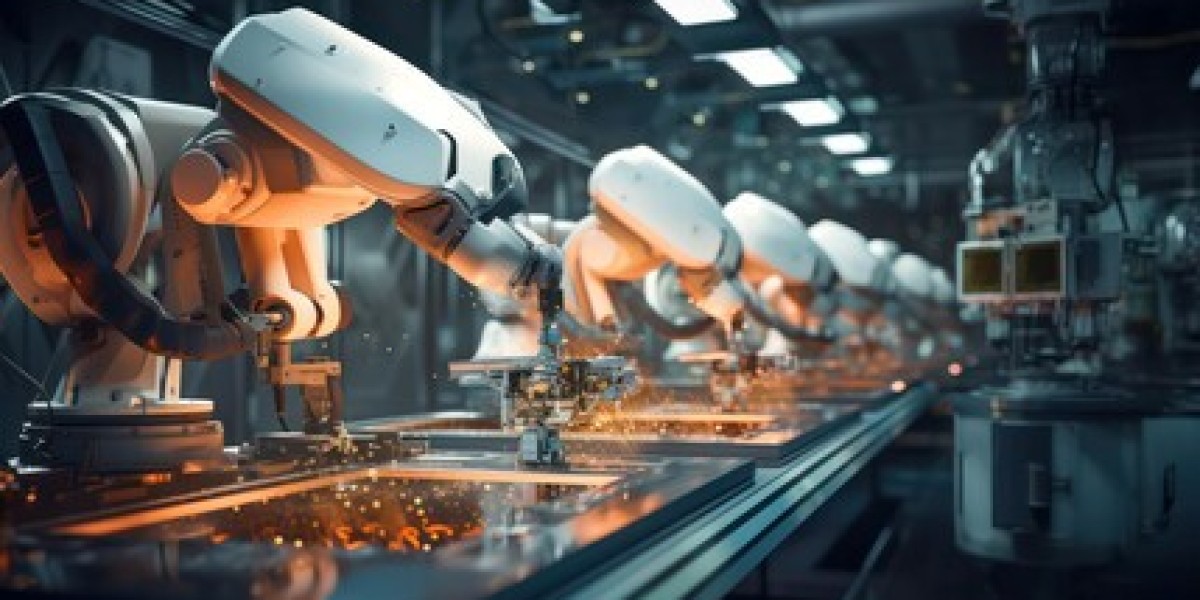Maximizing Efficiency: Robotic Automation Solutions
Introduction
Robotic automation solutions have emerged as a cornerstone in maximizing efficiency across various industries. This article explores the role of robotic automation in enhancing productivity, reducing costs, and streamlining operations for businesses worldwide.
Outline
- Understanding Robotic Automation
- Applications in Maximizing Efficiency
- Advantages and Benefits
- Challenges and Considerations
- Future Trends
- Conclusion
- FAQs
Background
Robotic automation involves the use of programmable machines equipped with advanced sensors and control systems to automate tasks traditionally performed by humans. These robots execute repetitive tasks with precision and speed, offering significant benefits in terms of efficiency and productivity.
Applications in Maximizing Efficiency
Robotic automation solutions find applications across various industries, including manufacturing, logistics, healthcare, and agriculture, among others. Key applications include:
- Manufacturing: Robots streamline production processes, such as assembly, welding, and painting, leading to increased throughput and reduced cycle times.
- Logistics: Automated guided vehicles (AGVs) and robotic arms optimize material handling tasks, such as palletizing, sorting, and packaging, within warehouses and distribution centers.
- Healthcare: Surgical robots assist surgeons in performing minimally invasive procedures with greater precision, reducing patient recovery times and improving outcomes.
- Agriculture: Autonomous drones and robotic harvesters revolutionize farming practices by enhancing crop monitoring, planting, and harvesting operations.
Advantages and Benefits
The adoption of robotic automation offers numerous advantages for businesses seeking to maximize efficiency:
- Increased Productivity: Robots work tirelessly without breaks or fatigue, leading to higher production rates and output levels.
- Improved Quality: Automation reduces errors and variability, ensuring consistent product quality and reliability.
- Cost Savings: By minimizing labor costs and optimizing resource utilization, robotic automation delivers significant cost savings over time.
- Enhanced Safety: Robots handle hazardous tasks and operate in dangerous environments, protecting human workers from potential risks and injuries.
Challenges and Considerations
While robotic automation presents compelling benefits, it also poses challenges that businesses must address:
- Initial Investment: The upfront costs of implementing robotic automation solutions can be substantial, requiring careful financial planning and analysis.
- Complexity: Integrating robots into existing workflows and systems may be complex and require specialized expertise in robotics and automation.
- Maintenance and Support: Robots require regular maintenance and technical support to ensure optimal performance and uptime, necessitating ongoing investment in training and resources.
Future Trends
The future of robotic automation is marked by several key trends:
- Collaborative Robotics: The rise of collaborative robots (cobots) that work safely alongside humans opens up new possibilities for human-robot collaboration in various industries.
- Artificial Intelligence: Advancements in AI enable robots to adapt to dynamic environments, learn from experience, and make autonomous decisions, enhancing their capabilities and versatility.
- Internet of Things (IoT) Integration: Robots connected to IoT networks can communicate and share data in real-time, enabling seamless coordination and synchronization in smart manufacturing environments.
Conclusion
Robotic automation solutions play a crucial role in maximizing efficiency across industries, offering a myriad of benefits ranging from increased productivity and quality to cost savings and safety improvements. As technology continues to evolve, businesses must embrace automation to stay competitive in today's rapidly changing landscape.
FAQs
Q: What factors should businesses consider when evaluating the ROI of robotic automation? A: Businesses should consider factors such as initial investment costs, expected productivity gains, labor savings, quality improvements, and long-term operational benefits when evaluating the ROI of robotic automation.
Q: How can businesses ensure the successful implementation of robotic automation solutions? A: Successful implementation requires thorough planning, stakeholder buy-in, proper training, and ongoing support and maintenance. Businesses should also consider scalability and flexibility to adapt to changing requirements and technologies.
Q: What role does data analytics play in maximizing the efficiency of robotic automation systems? A: Data analytics enables businesses to gather insights from robotic automation systems, such as performance metrics, predictive maintenance, and process optimization, allowing for continuous improvement and efficiency gains over time.



